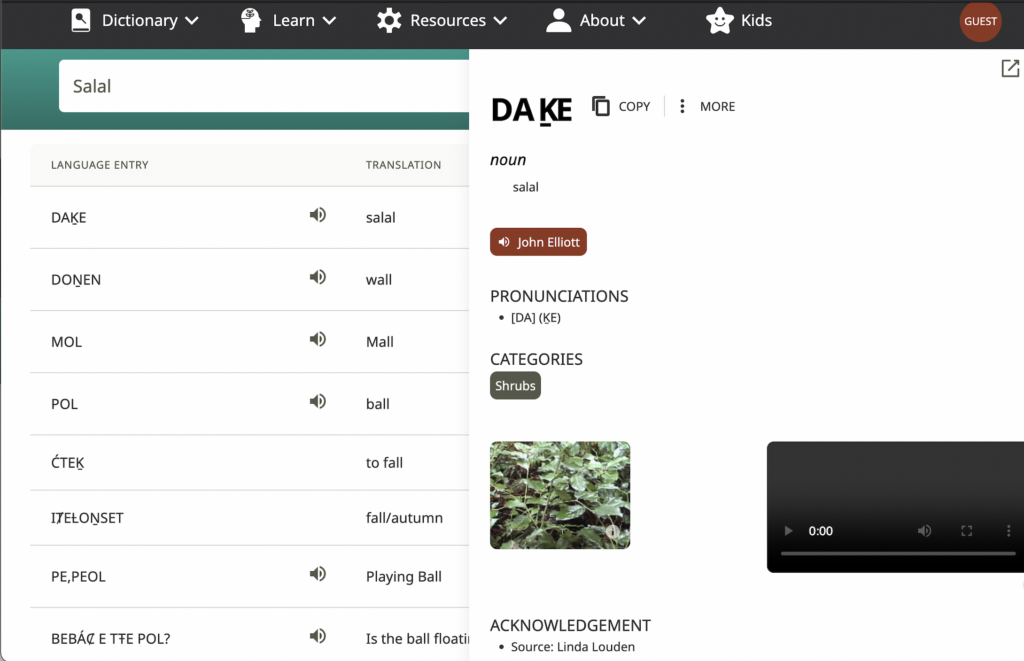DAḴE plants grow to about five feet tall. Its leaves are thick, egg-shaped, dark green, and waxy. Its spring flowers look like fuzzy white bells and are slightly sticky. DAḴE berries ripen in late summer and are a dull blue-black colour. They also have a five-pointed star shape on the underside.


DAḴE’s dark blue berries and young leaves are both edible. These berries are a traditional staple for many coastal communities in the northwest. I read in many articles that DAḴE berries are full of antioxidants and vitamins, and are often used in jams, desserts, and fruit leather. They can be eaten fresh or dried, which is wonderful because it means they can be enjoyed all throughout the year. Peter Constabel, a plant biologist at UVic, describes the berries as an earthy cross between blueberry and blackcurrant. I can attest! I found some berries today in East Sooke park and they were delicious. I’ve included a link to a DAḴE berry jam recipe that I’m eager to try!
Link: https://cavewomancafe.com/fruit/the-unsung-hero-the-salal-berry/
The leaves of this plant can be used in teas and tinctures to treat coughs, heartburn, bladder inflammation, and menstrual cramps. The leaves have astringent properties (which means that they draw water out of tissues), which also makes them useful to treat wounds. The leaves can also be made into a poultice to help stop bleeding and to soothe inflamed skin. To make DAḴE tea, you can dry the leaves by cutting their stems and bundling them with a rubber band, then placing them in a warm, dry spot away from sunlight. I’m excited to give this a try!
I’ve put together a list of my research sources. I encourage anyone interested in learning more about this Indigenous plant to explore them!
- https://www.goodgrub.org/post/plant-of-the-month-salal
- https://www.lakewildernessarboretum.org/natural-areas/tribal-life-trail/native-uses-of-salal/
- https://www.uvic.ca/news/topics/2018+salal-berries-constabel+news?ticket=ST-189845-w10rlOcNnaZwzSWaE8cSZS6nF7k-natterjack#:~:text=%E2%80%9CSalal%20berries%20may%20not%20be,plants%20produce%20biologically%20active%20compounds.
- https://camosun.ca/about/sustainability/operations/land-and-habitat/natsamaht-indigenous-plant-garden/native-plants#p-t
- https://www.goodfoodworld.com/2013/01/salal-food-medicine-and-culture-of-the-coast-salish-peoples/
(*) DAḴE is SENĆOŦEN, a dialect spoken by the Coast Salish peoples.
